Sonic 4 Episode 2's new physics based on Mega Drive games
Sonic Team on Wii, Vita and Episode 3.
Sonic the Hedgehog 4 Episode 2 has new game physics based on the Mega Drive era Sonic games.
Its game engine was built from the ground up after fans complained that the physics in Episode 2 felt "unnatural", Sonic Team boss Takashi Iizuka told Eurogamer as part of a new interview, below.
"I wanted to make sure people could play the game and it not feel unnatural," he said. "It should feel right. Rather than thinking of it as us trying to say, 'okay, this is the way it should be,' we looked at feedback where people were saying, 'this feels unnatural.'
"Those were the things we decided to eliminate, so it should feel natural when they play the game."
Sega unveiled Sonic 4 Episode 2 in January, confirming co-op gameplay with Tails, and Metal Sonic as the foe.
It launches on PlayStation Network, Xbox Live Arcade, iOS, Windows Phone and Android at some point this year.
Unlike Episode 1, however, Episode 2 will not release for the Wii. In his interview with Eurogamer, below, Iizuka explained why, offered his thoughts on the Vita, and discussed the iOS version.
What were the first ideas the team had for Episode 2 following the release of Episode 1?
Takashi Iizuka: When we started developing Episode 1, we already had plans for Episode 2 in our minds. What we were thinking of doing was having Tails in Episode 2. So, that was already in the very beginning, at the start of Episode 1.
Having released Episode 1, we had a lot of feedback from the community. People were quite vocal about certain things, namely the physics. They had some very specific points they wanted to raise about the physics. We were determined to make sure we addressed those issues.
So we started by building the game engine from the ground up and making sure we addressed those physics issues. That was the starting point of the project.
How exactly have the physics changed?
Takashi Iizuka: With Episode 1 we built the physics from the ground up. This time, rather than adding to it, we went back to the original Mega Drive Sonic games and we looked at the physics from them. We tried to make sure we replicated the things people were keen about for Episode 2. That's the way we addressed it.
I wanted to make sure people could play the game and it not feel unnatural. It should feel right. Rather than thinking of it as us trying to say, 'okay, this is the way it should be,' we looked at feedback where people were saying, 'this feels unnatural.' Those were the things we decided to eliminate, so it should feel natural when they play the game.
How did you go about deciding which stages to include?
Takashi Iizuka: With Episode 1, the concept was it's a continuation of Sonic the Hedgehog 1, 2 and 3 on the Mega Drive. To really drive home that concept to the consumers, we decided to include stages people had seen before and tap into that nostalgia factor. Essentially we wanted people to recognise this was a continuation from the Mega Drive era Sonics. That's why those stages were selected in Sonic 4 Episode 1.
In Episode 2, we wanted to make sure there was consistency. Our thought process was, half nostalgia, half new surprises and experiences. So there are some levels you've seen before and will recognise, and certain gimmicks and elements you'll recognise from the Mega Drive era. But there are also stages we've included to make sure there's content you've never seen before.
How does the co-op affect gameplay? What new experiences does it provide?
Takashi Iizuka: We first saw Tails in Sonic the Hedgehog 2. In that, he comes across as a sidekick, almost like a bonus character. Without Sonic the game wouldn't have stood up on its own right. In this one, we wanted to make sure they were on an even playing field, so he's not just a side-kick, he is another playable character.
So we included elements such as the tag action, which triggers a different behaviour depending on whether you're on land, in sea or in the air. The level design is created with that in mind. You have to cooperate to clear the levels. There will be certain sections and gimmicks in place throughout the levels where you have to do certain tag actions.
It's like they're equally as important as each other, rather than, it's Sonic with a sidekick. That whole approach and perspective makes a difference to how we design the levels, and differentiates the experience for Episode 1 to Episode 2.
Episode 1 launched on Wii as a WiiWare title. Episode 2 won't. Why?
Takashi Iizuka: Our intention was to release Episode 2 on Wii as well. But, there's a limitation on the size of the game you can release on WiiWare. Because Sonic 4 Episode 2 has cutscenes, and the graphics aren't 2D pre-rendered images - it's all 3D - all those things together made the game too big to be released as a WiiWare title. So, unfortunately, this time we had to give up on releasing it on the Wii platform.
Will the iOS version make use of the new iPad's increased graphical power?
Takashi Iizuka: The release of the new iPad was very recent, so we haven't been able to try it on it yet. But it's been developed and optimised for the iPhone 3DS, iPad, iPad 2, the iPhone 4 and the iPhone 4S.
So, how has the iOS experience changed from Episode 1 to Episode 2?
Takashi Iizuka: The Sonic 4 series is created to be a digital download title, and it's made to be on multiple platforms - not just home console systems. Obviously the hardware spec has greatly improved, so we're not just limited to 3G. Before, the 3G capabilities were a bottleneck for us to replicate Sonic and have that same experience you had at home. We had to drop the graphics down to make sure it was a smooth running experience.
With Episode 1, it should look and feel just as good and great as the home console systems. We're sticking with that ethos. But this time, because we don't have that limitation with 3G, and we can go beyond that, you can now expect the iOS version will look and feel a lot better than the previous version.
Did you consider a PS Vita version?
Takashi Iizuka: The Vita was only recently released in Europe and the US. Japan had a slightly earlier release, but it's still early days. At the moment, the team are looking at the market. They're looking at, who's buying the Vita? How much of the Vita is out there? Is there a market for it? What are the consumers after? Is Sonic 4 Episode 2 the kind of game they want? They're looking at the Vita very closely and looking at the market to see what would be the best fit for that?
Are you excited by Vita as a game creator?
Takashi Iizuka: The moment Vita was released in Japan I snapped up one myself. It's a really high spec device. I'm interested to see what kind of people will purchase it and have purchased it, and what kind of software is going to be released, and what would be the best fit for that. So I'm interested to see how it all turns out.
How many Sonic 4 Episodes do you plan to release?
Takashi Iizuka: Obviously, we named Sonic 4 Episode 4 with the name Episode 1. So we already planned Episode 2 at the time we created it. But we only actually planned for Episode 2 when we created Episode 1. We planned up to Episode 2. Now we've created up to Episode 2, we're interested to see what the market thinks of it. We want to hear people's feedback. We want to see how well it performs. And then maybe we can look at what to do next.
Have you heard of Half-Life 2?
Takashi Iizuka: Yes.
Half-Life 2: Episode 2 released in 2007. Five years later we're still waiting for Episode 3. I wonder if we'll have to wait that long for Sonic 4 Episode 3?
Takashi Iizuka: I don't know! I don't think so...


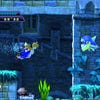


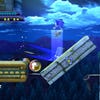




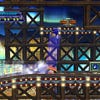
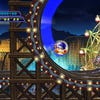
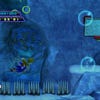


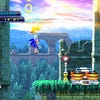
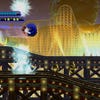
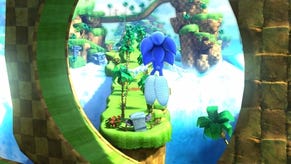
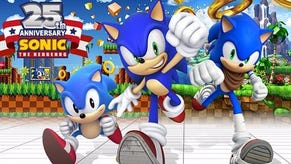





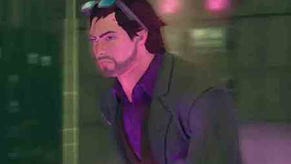


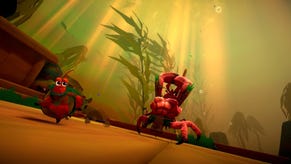
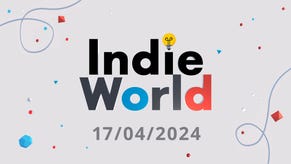
.png?width=291&height=164&fit=crop&quality=80&format=jpg&auto=webp)


